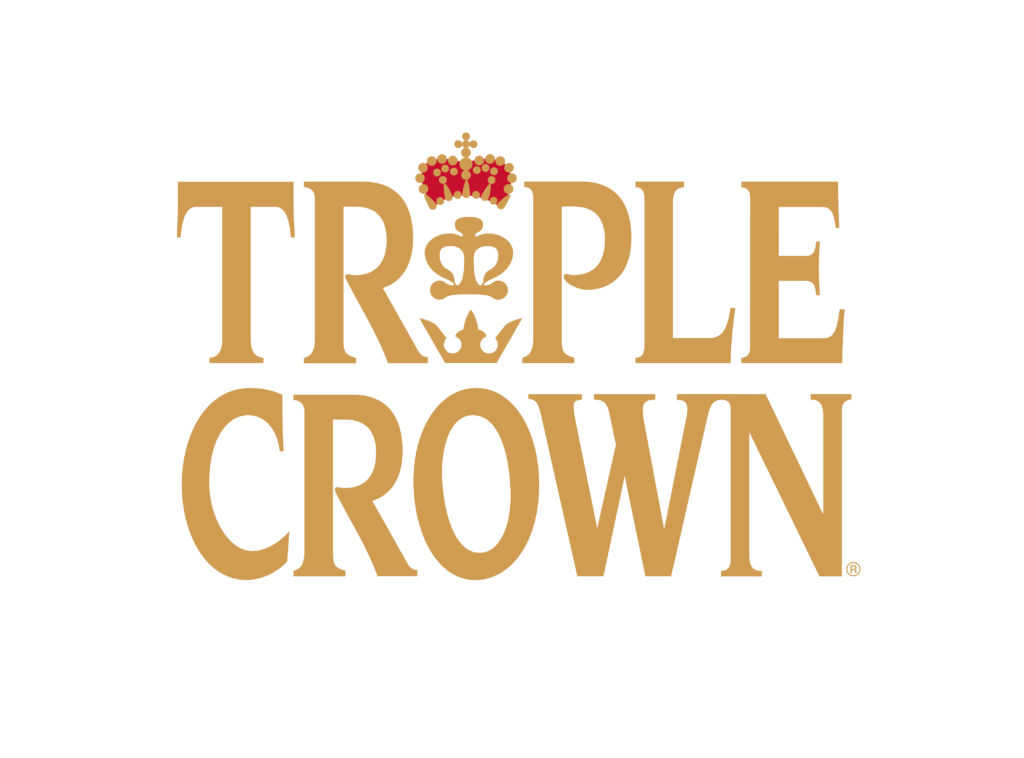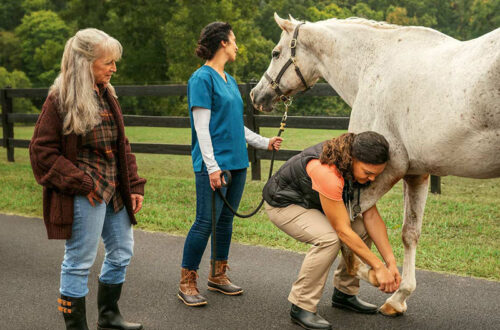
Hay Alternatives & High Fiber Options
By Jessica Drexler
Brought to you by Triple Crown Nutrition, the Official Feed Sponsor of USPC
This summer’s drought has been devastating to our pastures, reducing hay crops and posing potentially serious horse care management challenges. In general, horses need to consume 1-2% of their body weight in hay every day. Poor pasture quality and quantity can mean fewer calories and nutrients in the hay being harvested, hay shortages and higher costs, so we need to be prepared with good quality fiber alternatives, especially when looking toward the winter months. Luckily, there is a variety of forage and high fiber options to help.

Chopped Hay
A horse’s diet should consist of abundant forage or quality pasture. Ideally, longer stemmed hay is most desirable, like harvested hay prepared in small, large or round bales in combination with fresh pasture. Chopped hay is a great option to supplement or replace long stemmed hay. Look for chopped hay with a fiber length of 1-1.5” or longer to assure good gut motility and to give the “scratch factor” effect. This helps promote good gut health and gut muscular waves, known as peristalsis, that help move ingested forage through the digestive tract. Chopped grass forage and alfalfa/grass chopped forage such as those offered by Triple Crown are options, as well as a fortified, low starch and sugar alternative such as Triple Crown’s Safe Starch Forage for horses/ponies with metabolic issues.
Cubes
Forage cubes also work well to help supplement or replace the hay portion of the diet and provides a longer fiber length that is more desirable than feeding hay pellets. Historically, cubes consisted only of 100% alfalfa, but today there are a variety of combinations to meet owner and horse preferences. They can be fed as-is or soaked to make a softer mash for a senior or horses with poor teeth. Triple Crown offers 100% alfalfa and alfalfa-timothy forage cubes. For horses with metabolic issues, there are cubes that are low in starch and sugar with added minerals, such as Triple Crown’s Timothy Balance Cubes
Complete Feeds
Complete, beet pulp-based feeds are also an option because they contain enough dietary fiber for horses to thrive without or on considerably less hay or pasture. Ideally, you still want to provide some long stem fiber sources with these feeds, but senior horses and horses that have poor or no teeth can thrive solely on complete feeds. Complete feeds are offered for a variety of nutritional needs, such as Triple Crown Senior, Complete, Growth and Senior Gold.
Fiber Alternatives
Other fiber alternatives include shredded beet pulp and pelleted hays. These options have been used successfully as fiber supplements, but only under strict management guidelines. Beet pulp, for example, works very well for senior horses or those with metabolic issues due to its higher calorie content, low starch and sugar and ability to be soaked into a mash. They are best when combined with a feed program that includes ration balancers to help ensure daily vitamins and mineral needs are met.
Horses should continue to consume long stem hay and pasture for as long as they are able, but when that’s not possible, you can choose from a variety of high fiber options to meet your horse’s daily forage requirements.

About Triple Crown Nutrition — Official USPC Feed Sponsor
Triple Crown offers premium equine feeds that provide the exact nutrition your horse needs, designed to help support immunity and gut health. Learn more at TripleCrownFeed.com.
Read this story and more in the Fall/Winter 2021 issue of Discover USPC magazine.





